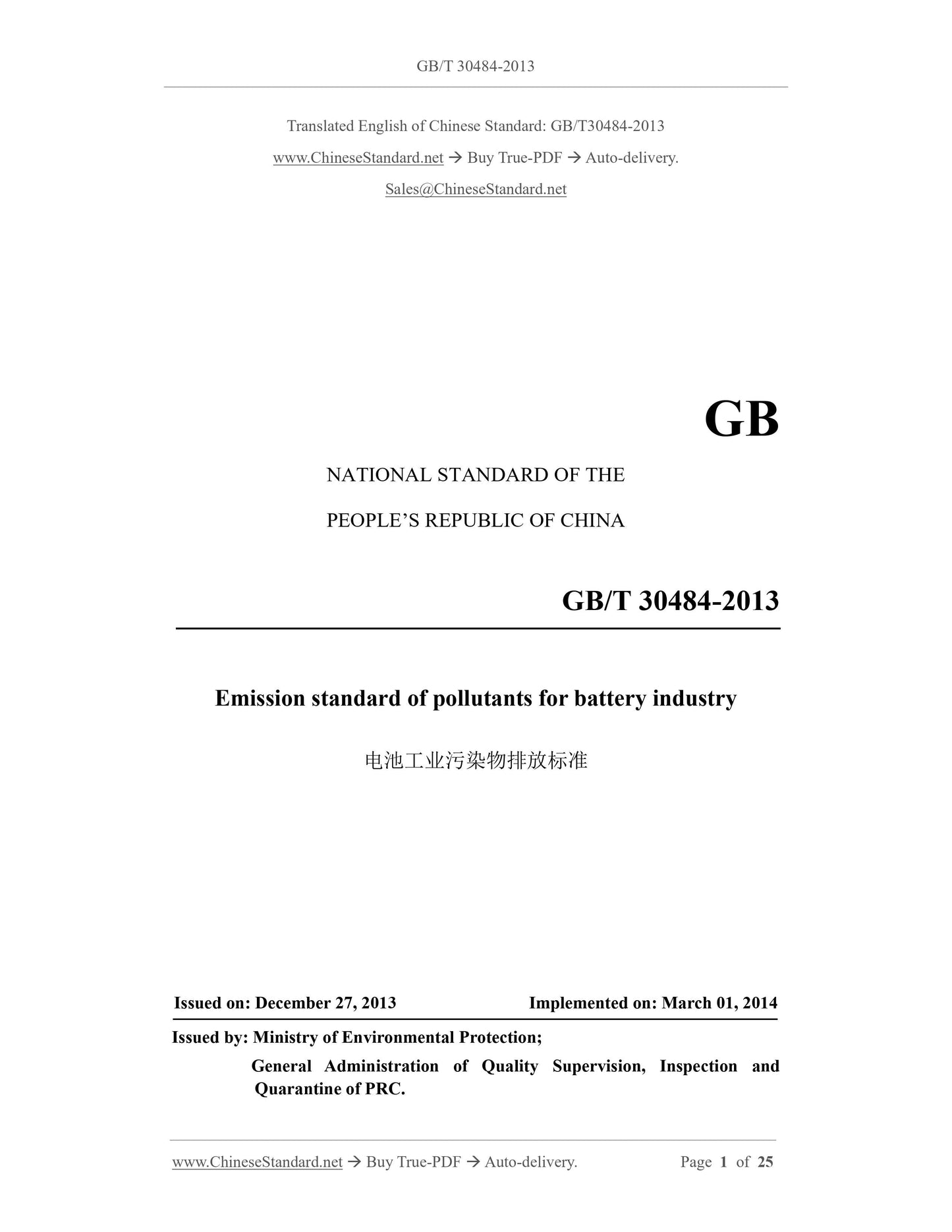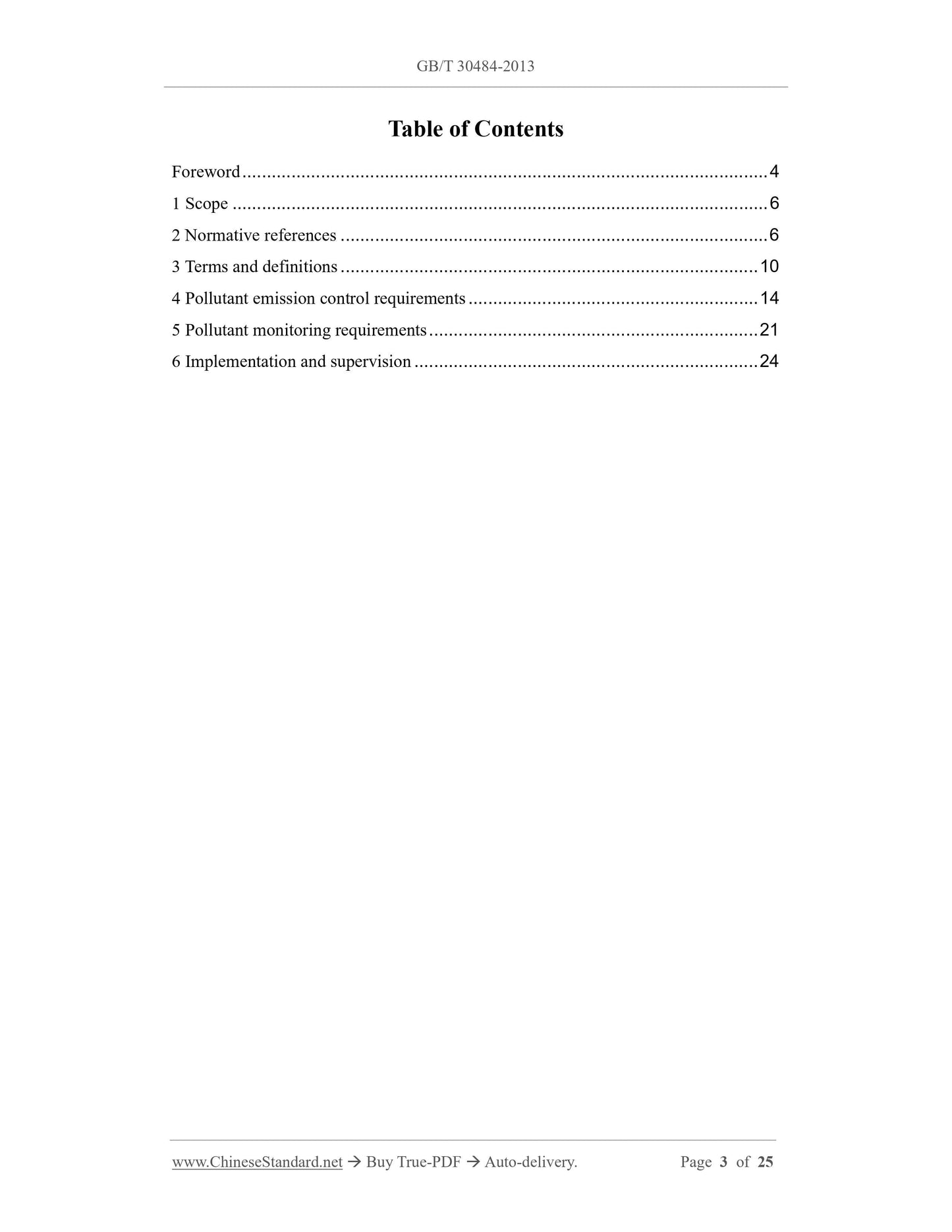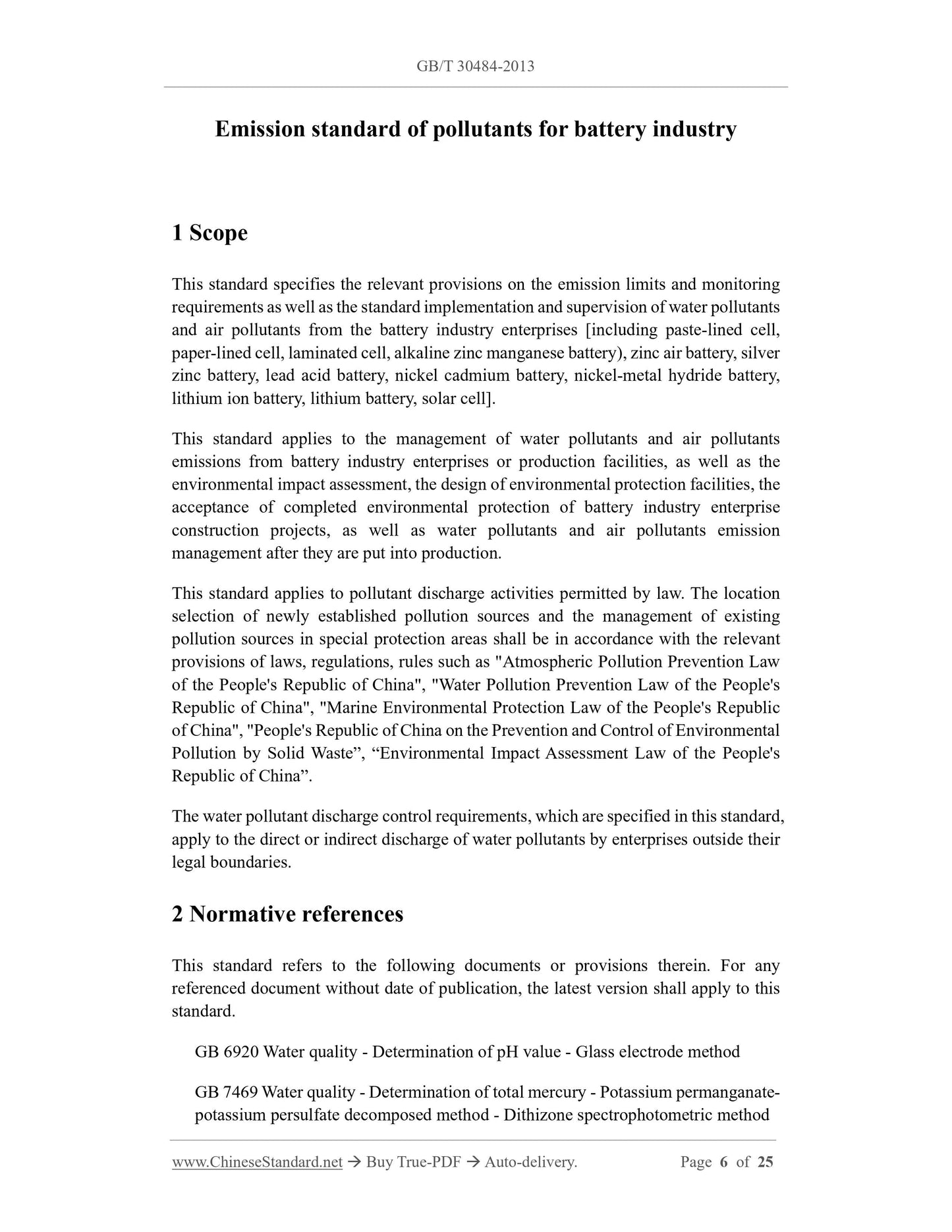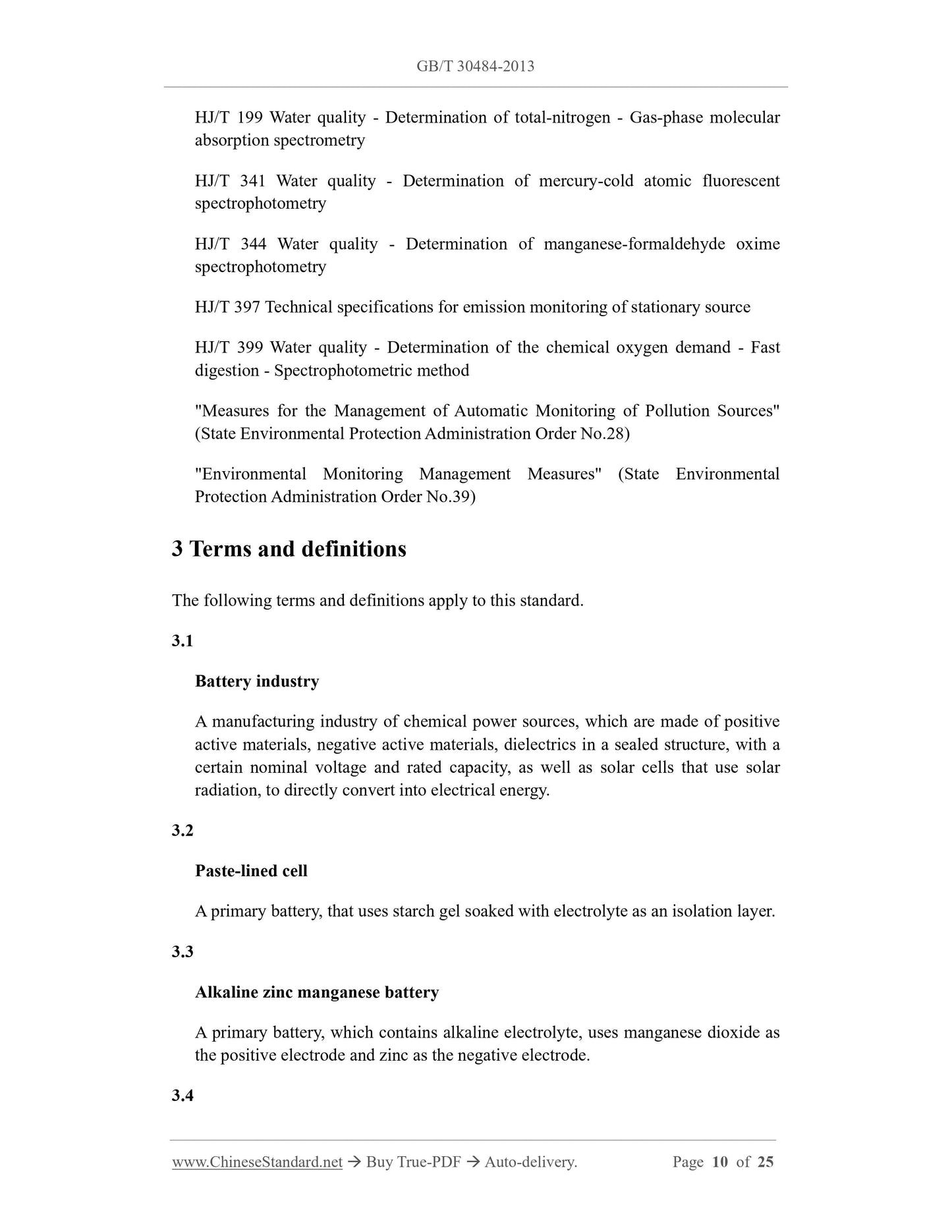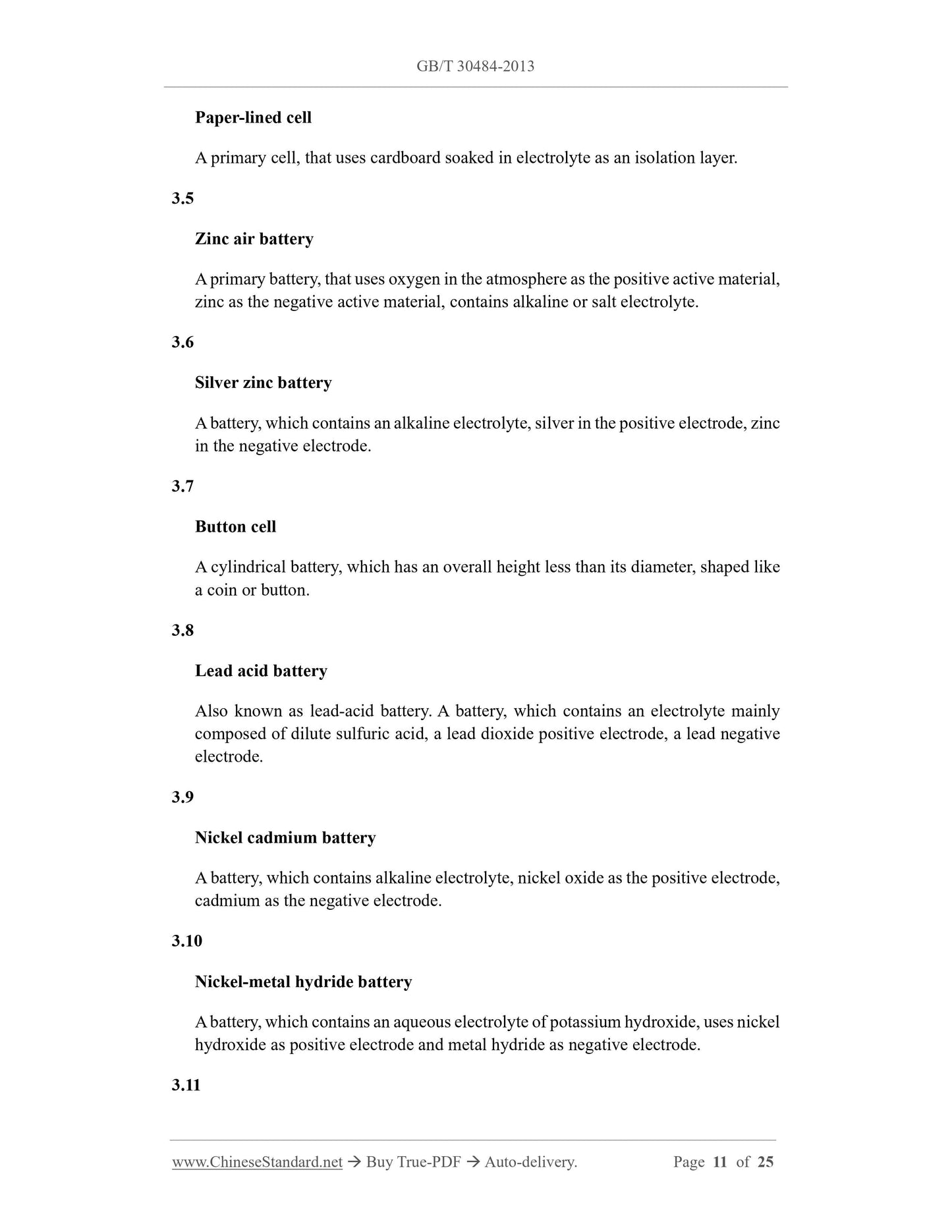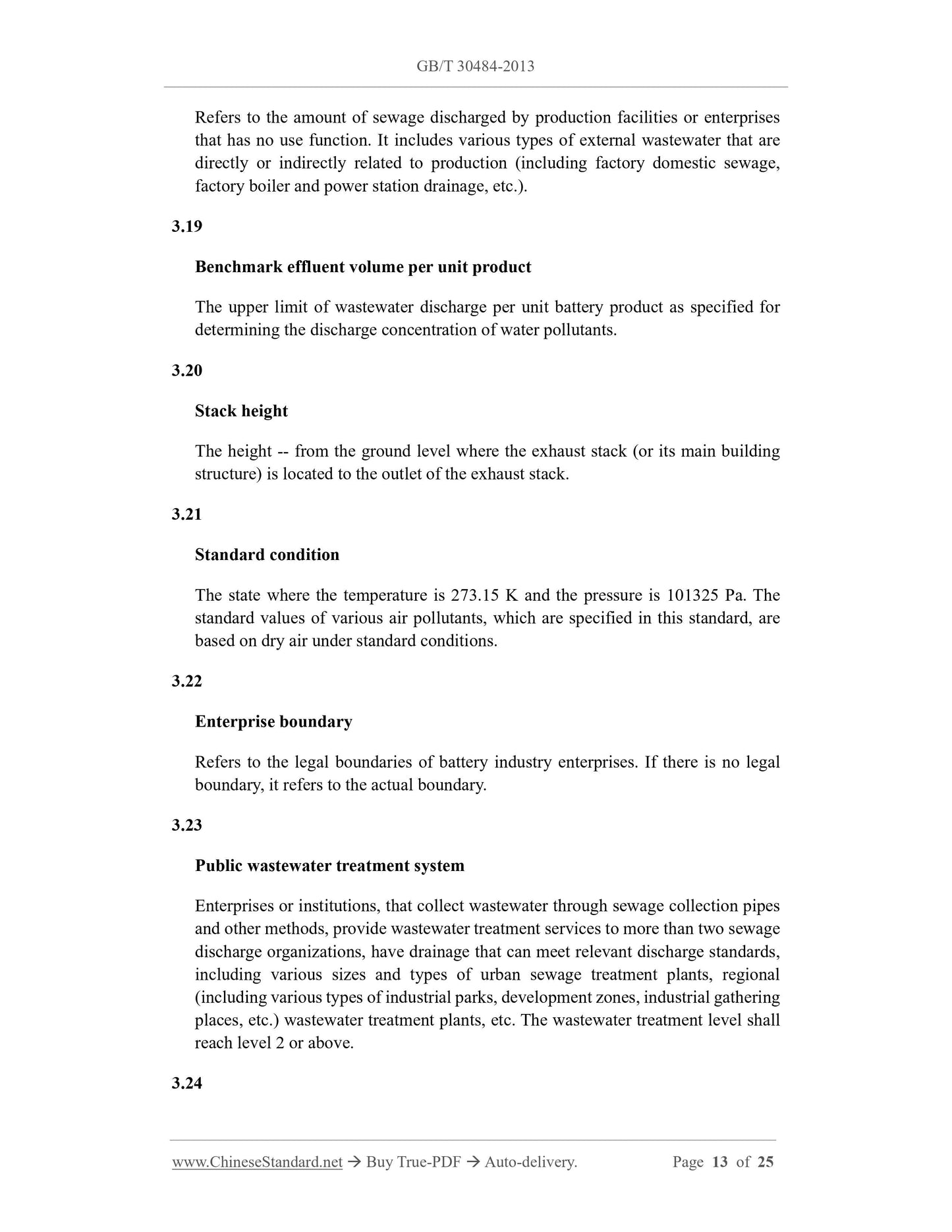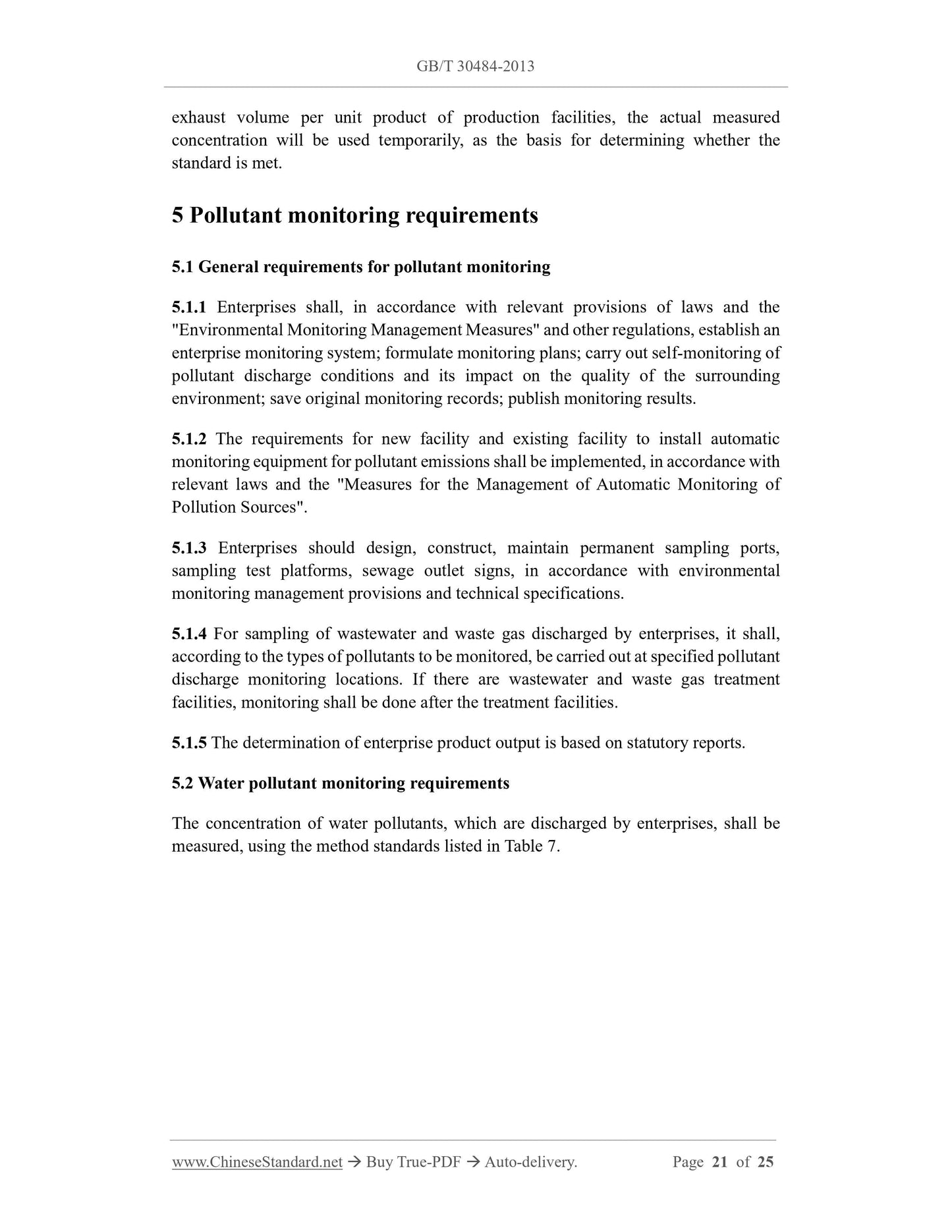1
/
of
7
www.ChineseStandard.us -- Field Test Asia Pte. Ltd.
GB 30484-2013 English PDF
GB 30484-2013 English PDF
Regular price
$245.00
Regular price
Sale price
$245.00
Unit price
/
per
Shipping calculated at checkout.
Couldn't load pickup availability
GB 30484-2013: Emission standard of pollutants for battery industry
Delivery: 9 seconds. Download (and Email) true-PDF + Invoice.Get Quotation: Click GB 30484-2013 (Self-service in 1-minute)
Newer / historical versions: GB 30484-2013
Preview True-PDF
Scope
This standard specifies the relevant provisions on the emission limits and monitoringrequirements as well as the standard implementation and supervision of water pollutants
and air pollutants from the battery industry enterprises [including paste-lined cell,
paper-lined cell, laminated cell, alkaline zinc manganese battery), zinc air battery, silver
zinc battery, lead acid battery, nickel cadmium battery, nickel-metal hydride battery,
lithium ion battery, lithium battery, solar cell].
This standard applies to the management of water pollutants and air pollutants
emissions from battery industry enterprises or production facilities, as well as the
environmental impact assessment, the design of environmental protection facilities, the
acceptance of completed environmental protection of battery industry enterprise
construction projects, as well as water pollutants and air pollutants emission
management after they are put into production.
This standard applies to pollutant discharge activities permitted by law. The location
selection of newly established pollution sources and the management of existing
pollution sources in special protection areas shall be in accordance with the relevant
provisions of laws, regulations, rules such as "Atmospheric Pollution Prevention Law
of the People's Republic of China", "Water Pollution Prevention Law of the People's
Republic of China", "Marine Environmental Protection Law of the People's Republic
of China", "People's Republic of China on the Prevention and Control of Environmental
Pollution by Solid Waste”, “Environmental Impact Assessment Law of the People's
Republic of China”.
The water pollutant discharge control requirements, which are specified in this standard,
apply to the direct or indirect discharge of water pollutants by enterprises outside their
legal boundaries.
Basic Data
| Standard ID | GB 30484-2013 (GB30484-2013) |
| Description (Translated English) | Emission standard of pollutants for battery industry |
| Sector / Industry | National Standard |
| Classification of Chinese Standard | Z60 |
| Classification of International Standard | 13.040.01 |
| Word Count Estimation | 16,185 |
| Quoted Standard | GB 6920; GB 7469; GB 7470; GB 7471; GB 7475; GB 7484; GB 11893; GB 11901; GB 11906; GB 11907; GB 11910; GB 11911; GB 11912; GB 11914; GB/T 15264; GB/T 15432; GB/T 16157; HJ 479; HJ 480; HJ 481; HJ 487; HJ 488; HJ 489; HJ 490; HJ 537; HJ 538; HJ 539; HJ 54 |
| Regulation (derived from) | Department of Environmental Protection Notice No. 80 of 2013; National Standards Bulletin 2013 No. 27 |
| Issuing agency(ies) | Ministry of Environmental Protection, General Administration of Quality Supervision, Inspection and Quarantine of the People's Republic of China |
| Summary | This standard specifies the cell [including manganese batteries (paste-type batteries, cardboard batteries, laminated batteries, alkaline manganese batteries), zinc air batteries, zinc-silver batteries, lead acid batteries, nickel cadmium batteries, nicke |
Share
